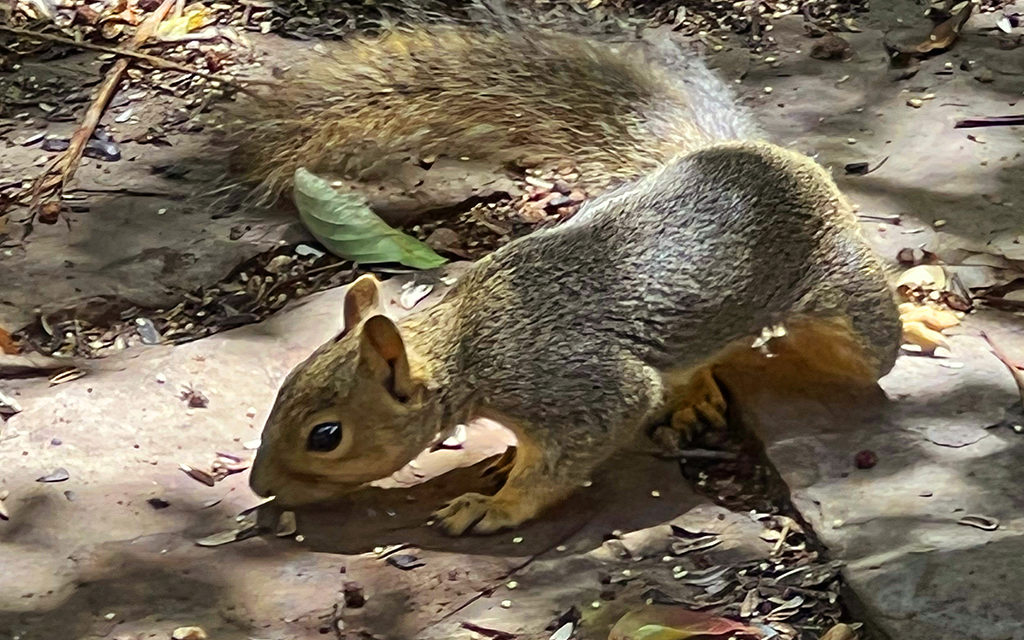by John Jefferson
I started to write this week about schooling bass on Texas lakes. Although usually lasting into September, it looks like the only event that’ll do that is HOT WEATHER!
One guide said schooling was mostly over due to the 100-plus degree weather. Lake water temps are around 90 degrees. Ouch!
So, after church Sunday, I ran into to a young couple who told me of a startling event you need to hear about.
She and her husband were taking a walk recently when a squirrel came running up and somewhat grabbed her foot or ankle. She quickly kicked it away but was still visibly shaken by the encounter.
She remarked that at least she knew that squirrels don’t carry rabies, so didn’t worry about it.
I don’t know about that. Squirrel bites are extremely rare. But running up and grabbing at my friend’s ankle is unusual behavior for squirrels — and unusual behavior is one sign of possible rabies. Her kicking the little rodent away was the thing to do. Apparently, her skin wasn’t broken. Good thing.
But since squirrels are warm blooded animals, why can’t they carry rabies?
My usual printed references didn’t mention rabies. The Internet wasn’t much help either, but it did say that there have been few cases of squirrel bites. The main one mentioned was in India. A young man there suffered for several weeks after having been bitten by a squirrel. Most bites seem to have been somewhat provoked – people handling them, often trying to help injured ones.
I then called Parks and Wildlife. A helpful lady referred me to Blake Hendon, a wildlife biologist working Central Texas. Hendon confirmed what I suspected but added that squirrel bites have been very rare. (Ever tried to sneak up on a squirrel?) Hendon also sent me two documents confirming how rare squirrel bites are and that rabies infections from them were rarer, still.
One of the documents had been published in the Journal of the American Veterinary Medical Assn. It reviewed research done twice for 16 years each time. One interesting result was that rabies among rodents increased during the latest 16-year period (1995-2010).
That document stated, “Analysis supported the assumption that rabies remained rare in rodents and lagomorphs (rabbits, hares, and a few others). However, transmission of rabies virus via exposure to a rabid rodent or lagomorph may be possible.” Its data included a few rabid squirrels.
The other document was from the Texas Dept. of State Health Services. It concerned animal rabies and confirmed that the high – risk animals were bats, skunks, foxes, coyotes, and racoons. Rabies was reported from 111 Texas counties in 2021. Travis County reported the most (bats); Bexar was second (bats). Harris County was second in 2020, mostly with bats. Other animals included cats, dogs, cattle, horses, a goat, a sheep and a deer. No squirrels.
Squirrels don’t make good pets. Especially if they could carry rabies! Handling them will probably lead to being bitten.
In fact, that’s good advice for encountering ALL wild animals.
JJ





